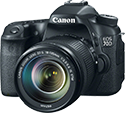Root-maggot flies
(family Anthomyiidae)
Overview • Description • Distribution • Taxonomy

Overview
Anthomyiidae is a large family of flies. It occurs worldwide on every continent except Antarctica.
There are 2,000 currently recognized Anthomyiidae species in 52 genera in 2 subfamilies worldwide, about 640 species in about 40 genera in 2 subfamilies in North America north of Mexico, and at least 21 species in 13 genera in 2 subfamilies in Minnesota.
Most adult Anthomyiidae feed on plant nectar. Some feed on pollen, and some are predaceous, usually attacking other flies.
Most Anthomyiidae larvae are plant feeders. They are found in the roots and stems of plants. This is the feature that gives the family its common name. Some species feed on decaying vegetable matter, some are internal parasites of insect larvae, and some prey on the larvae or nymphs of insects.
Some Anthomyiidae species are significant agricultural pests, including onion fly, wheat bulb fly, turnip root fly, bean seed fly, and cabbage root fly. A few species are important biological controls of locusts..
Description
Anthomyiidae are small to medium-sized, 1⁄16″ to ½″ (2 to 12 mm) in length. Most look like common house flies. The body may be drab yellow, brown, gray, or blackish, but it is never metallic.
On the antennae, the bristle (arista) is short, and it is feather-like (plumose) along its entire length.
On each side of the thorax, the small plate above the base of the hind legs (hypopleuron) has no bristles.
On the wings, the M1 vein does not curve forward, the R5 vein is parallel-sided, and the anal vein reaches the wing margin. The r4+5 cell is widely open at the wing margin.
Root maggot flies are best identified to the species level by detailed examination of the bristle pattern on the thorax and the legs.
Distribution |
||
|
Sources Biodiversity occurrence data published by: Minnesota Biodiversity Atlas (accessed through the Minnesota Biodiversity Atlas Portal, bellatlas.umn.edu, 10/10/2025). |
|
| 10/10/2025 | ||
Taxonomy
Order
Suborder
Brachycera
Infraorder
Cyclorrhapha
Zoosection
Schizophora
Zoosubsection
Calyptratae (Calyptrate Flies)
Superfamily
Muscoidea
Subordinate Taxa
Genus Acklandia
Genus Acridomyia ![]()
Genus Acyglossa
Genus Adia ![]()
![]()
Genus Alliopsis ![]()
Genus Anthomyia ![]()
![]()
Genus Boreophorbia
Genus Botanophila ![]()
Genus Calythea ![]()
Genus Chiastocheta
Genus Chirosia ![]()
![]()
Genus Coenosopsia
Genus Delia ![]()
![]()
Genus Egle ![]()
![]()
Genus Emmesomyia
Genus Enneastigma
Genus Eustalomyia ![]()
![]()
Genus Eutrichota ![]()
![]()
Genus Fucellia (seaweed flies) ![]()
![]()
Genus Heterostylodes
Genus Hydrophoria ![]()
![]()
Genus Hylemya ![]()
![]()
Genus Hyporites
Genus Lasiomma ![]()
Genus Leucophora ![]()
![]()
Genus Mycophaga
Genus Myopina
Genus Paradelia
Genus Parapegomyia
Genus Paregle ![]()
![]()
Genus Pegomya ![]()
![]()
Genus Pegoplata
Genus Phorbia ![]()
Genus Sinohylemya
Genus Strobilomyia
Genus Subhylemyia
Genus Taeniomyia
Genus Tettigoniomyia
Genus Zaphne
Synonyms
Scatomyzidae
Common Names
root-maggot flies
Visitor Photos
Share your photo of this insect.
This button not working for you?
Simply email us at info@MinnesotaSeasons.com.
Attach one or more photos and, if you like, a caption.
Alfredo Colon |
||
 |
 |
|
 |
||
MinnesotaSeasons.com Photos
|

Slideshows
Root-maggot flies
Andrée Reno Sanborn
Anthomyiidae
Lloyd-Davies

Visitor Videos
Share your video of this insect.
This button not working for you?
Simply email us at info@MinnesotaSeasons.com.
Attach a video, a YouTube link, or a cloud storage link.
Other Videos
"Root-Maggot Flies Unveiled: Discovering the Colorful World of Anthomyiidae"
mohamed moumaris
Dung Fly (Anthomyiidae) on Leaf
Carl Barrentine

Visitor Sightings
Report a sighting of this insect.
This button not working for you?
Simply email us at info@MinnesotaSeasons.com.
Be sure to include a location.
MinnesotaSeasons.com Sightings




